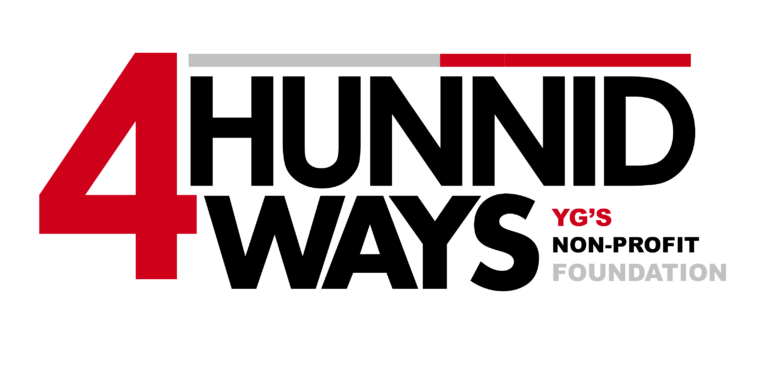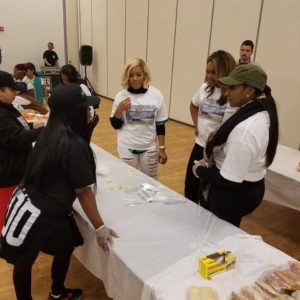
Foundation
The Foundation comprises of three primary programs:
YG’s Kids
- Spring Salute to Mothers – April/May
- Annual Back to School Community Event – August
- Nothing Can Stop Me Holiday Campaign – Essay Contest – December
- STEM (Science, Technology, Engineering, Math)
- Music Engineering – Working with top industry music producers and individuals who have a true and authentic interest in learning the behind scenes in a music studio
- Job Development
- Career Guidance & Preparation
- Personal Finance Education
- In partnership with Wells Fargo Bank increase your personal finance knowledge.
- Receive personal finance tips and advice from personal finance experts.
Health & Prevention Awareness
- HIV & STD Education & Testing
- In partnership with the County of Los Angeles Department of Public Health



Free Community Teen Friendly Services
HIV- STD- Pregnancy Testing Clinics
Martin Luther King JR. Center for Public Health
11833 S. Wilmington Ave., Los Angeles, CA 90059
(323) 568-8100 call for hours
Planned Parenthood
11722 Wilmington Ave., Los Angeles, CA 90059
(800) 576-5544 call for other locations
EXUM Medical Corporation
555 W. Compton Blvd. #202, Compton, CA 90220
(310) 537-2440 call for hours
ST John’s Well Child & Family Center
2115 N. Wilmington Ave., Compton, CA 90222
(323) 541-1411 call for hours
WEE Care Associates
403 S. Long Beach Blvd., Compton, CA 90221
(323) 774-6551 call for hours
Charles R. Drew Mobile Unit (free HIV & Hep C testing & free condoms)
Call for times and locations (323) 563-4919
Teen Hotline
(800) 852-8336
www.teenlineonline.org
LA County STD Hotline
free condoms (800) 758-0880 Mon- Fri, 7:30 am – 5:30 pm.
www.publichealth.lacounty.gov/dhsp
HIV Facts
AIDS, or Acquired Immunodeficiency Syndrome, is caused by HIV
You can have HIV in your body for many years and not feel sick.
How do I get HIV?
HIV is transmitted through blood, semen, pre-cum, vaginal fluid, and breast milk. The two main ways people get HIV are through unprotected sexual contact (during anal, vaginal and possibly oral sex).
and sharing needles (shootings drugs or getting tattoos) with someone who has HIV. If you are pregnant and have HIV, you can give it to your baby before or during birth, or when you breastfeed.
HIV/AIDS Symptoms
From two to twelve weeks after you have been infected, you may get flu-like symptoms, like fevers, body aches, and swollen glands. You may also get night sweats, weight loss, diarrhea, swollen lymph nodes, oral thrush, and vaginal yeast infections as HIV slowly weakens your immune system.
HIV/AIDS Complications
HIV slowly destroys your immune system (destroys T cells/CD4 cells) the cells that fight infection in your body. As a result, disease that your body can normally fight off, such as a cold, can make you very sick. Overtime, HIV infection develops into AIDS, which can lead to opportunistic infections such as Cancer or Tuberculosis.
HIV Treatment
HIV/AIDS is not curable but there are medications and other ways to keep you healthy.
HIV Prevention
Abstinence (no sex anal, oral, or vaginal sex) is the only sure preventive measure, secondly, no sharing needles for shooting drugs, or tattooing, no sharing razors and tooth brushes. Use a latex condom every time you have sex, you and your sex partner get tested for HIV. Remember the more sex partners you have you are at greater risk of acquiring HIV. Get tested for STDs, Chlamydia, Gonorrhea, Syphilis, and trichomonas’s, when STDs are present you have an increased chance of acquiring HIV. Do not use drugs and alcohol during sex, it may lower your inhibitions and you may take risks like not using a condom.
STD Fact Sheet
Sexually Transmitted Diseases l Fact Sheet
CHLAMYDIA
How common is chlamydia?
Chlamydia is the most commonly repofled sexually transmitted disease (STD) in Los Angeles County
(LAC), the US and Califomia . In 2013, there were 48,080 cases of chlamydia reported to the LAC Division of HIV and STD Programs (DHSP). This corresponds to a rate of 51 1 per 100,000 LAC residents.
How has the chlamydia trend changed in the past 5 years?
From 2009-2013, the number of cases of chlamydia reported to DHSP has increased by nearly 10%. This increase is slightly lower than the 14% increase that occurred throughout California over this time period2.
Which populations are most impacted by chlamydia?
Females: Nearly two-thirds of all LAC chlamydia cases reported to DHSP in 2013 and 67% in California occurred among females.
Youth and young adults: Despite accounting for roughly 15% of the total LAC population and 15% of the California population, persons ages 15-24 accounted for 59% of the chlamydia cases reported to DHSP in 2013 and 60% of the cases reported in California2 .
African Americans and Latinos: The rate of chlamydia among African Americans is 2.5 times higher than the rate among Latinos and almost 6 times higher than the ratc among whites. The rate of chlamydia among Latinos is more than double that of whites.
“Which geographic regions of the county are most impacted by chlamydia?
Compared 1.0 other STDs, chlamydia morbidity is more geographically dispersed throughout LAC. Nonetheless, 21% of all reported cases occurred among residents living in the South (SPA 6) region which includes 11% oflhc total 2013 LAC population. The rate of chlamydia in the South region (954 per 100,000) is three times higher than in the region with the lowest rate (West-SPA 5, 313 per
GONORRHEA
How common is gonorrhea?
Gonorrhea is the second most commonly reported STD in Los Angeles County (LAC). In 2013, there were 12,484 cases of gonorrhea reported 10 DIISP. This corresponds ID ratc of 133 per 100,000 LAC residents.
How has the gonorrhea trend changed in the past 5 years?
From 2009-2013, the number of cases of gonon-hca reported to DHSP increased by 47%. This increase is lower than the 60% increase that occurred throughout California over this time period’.